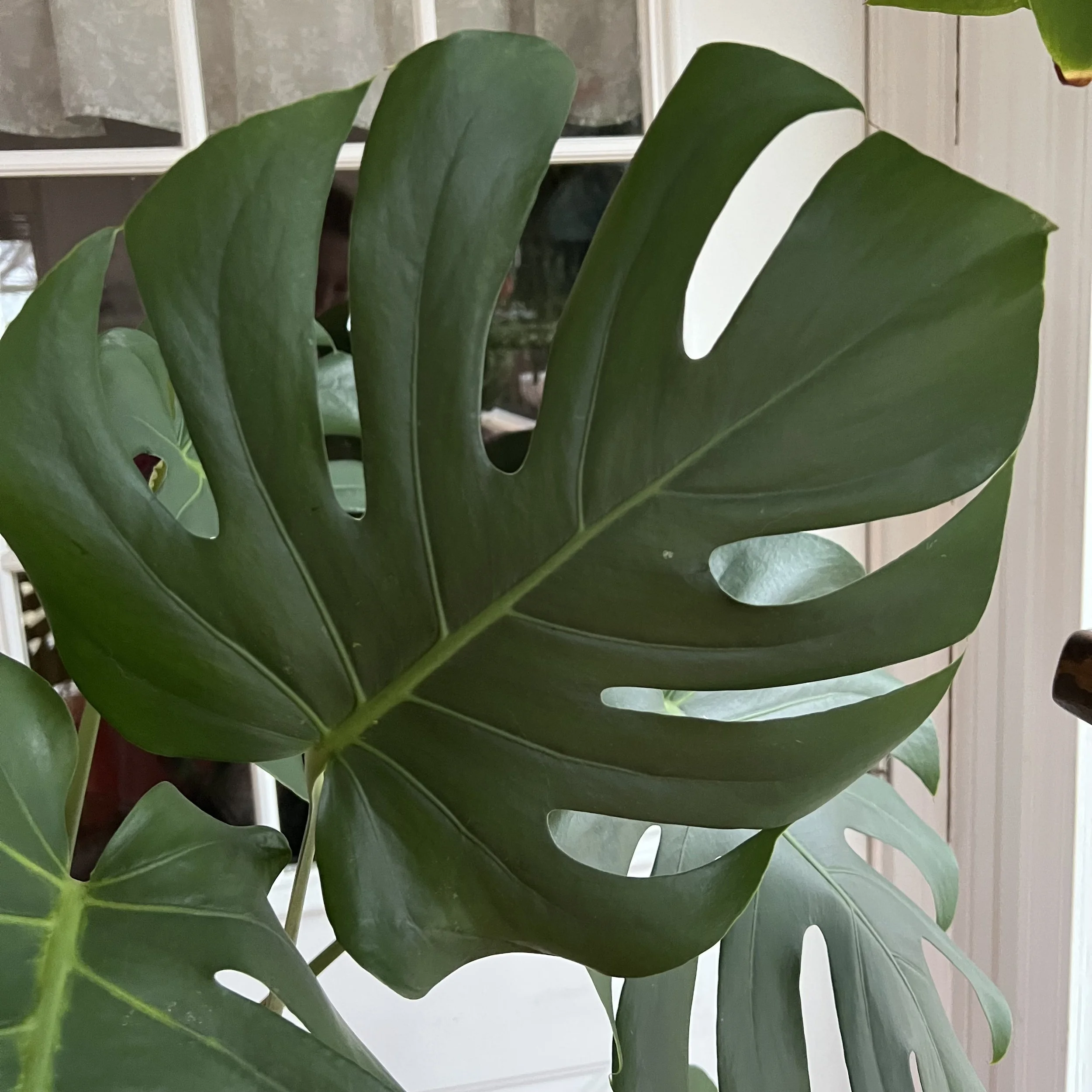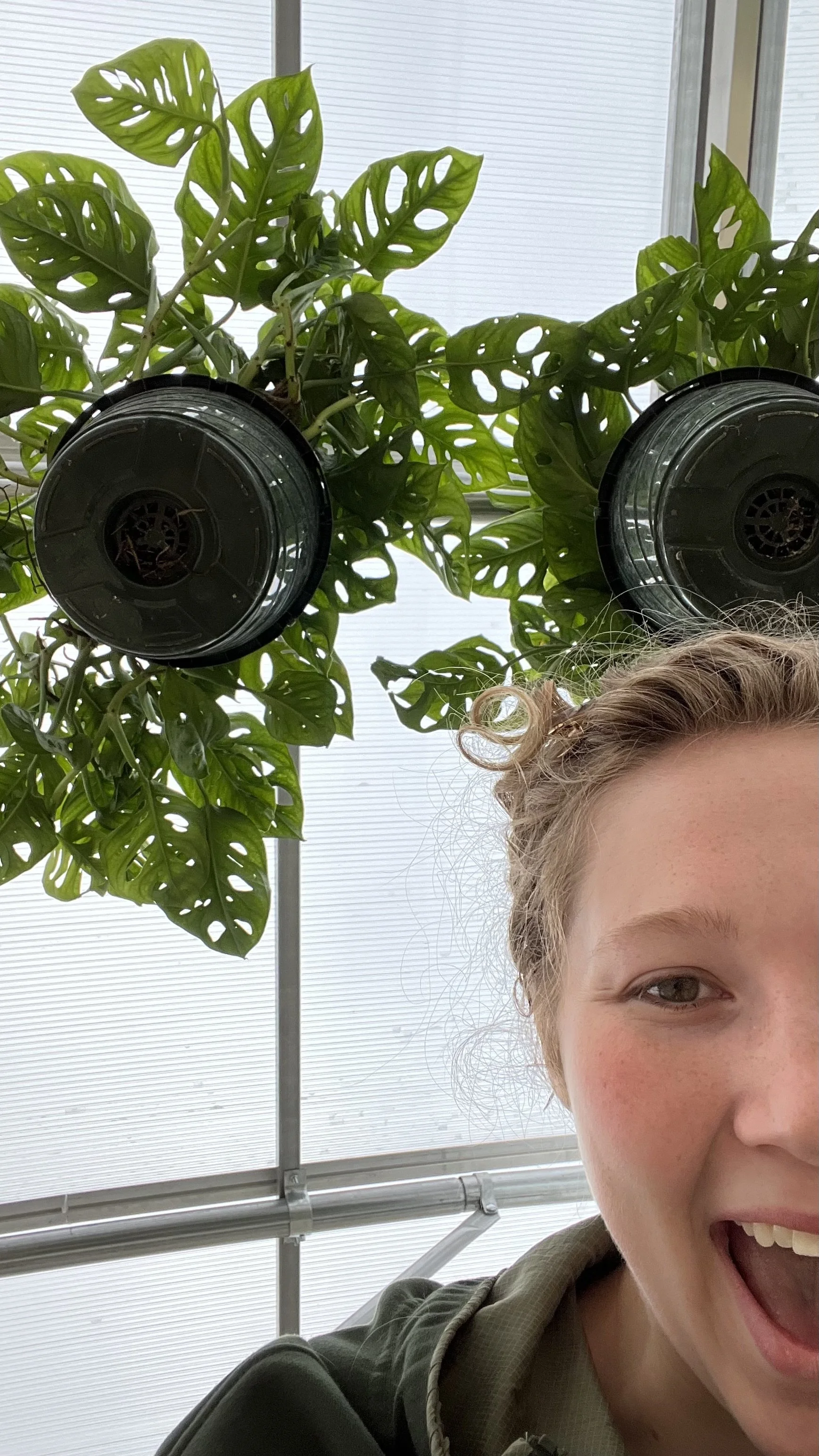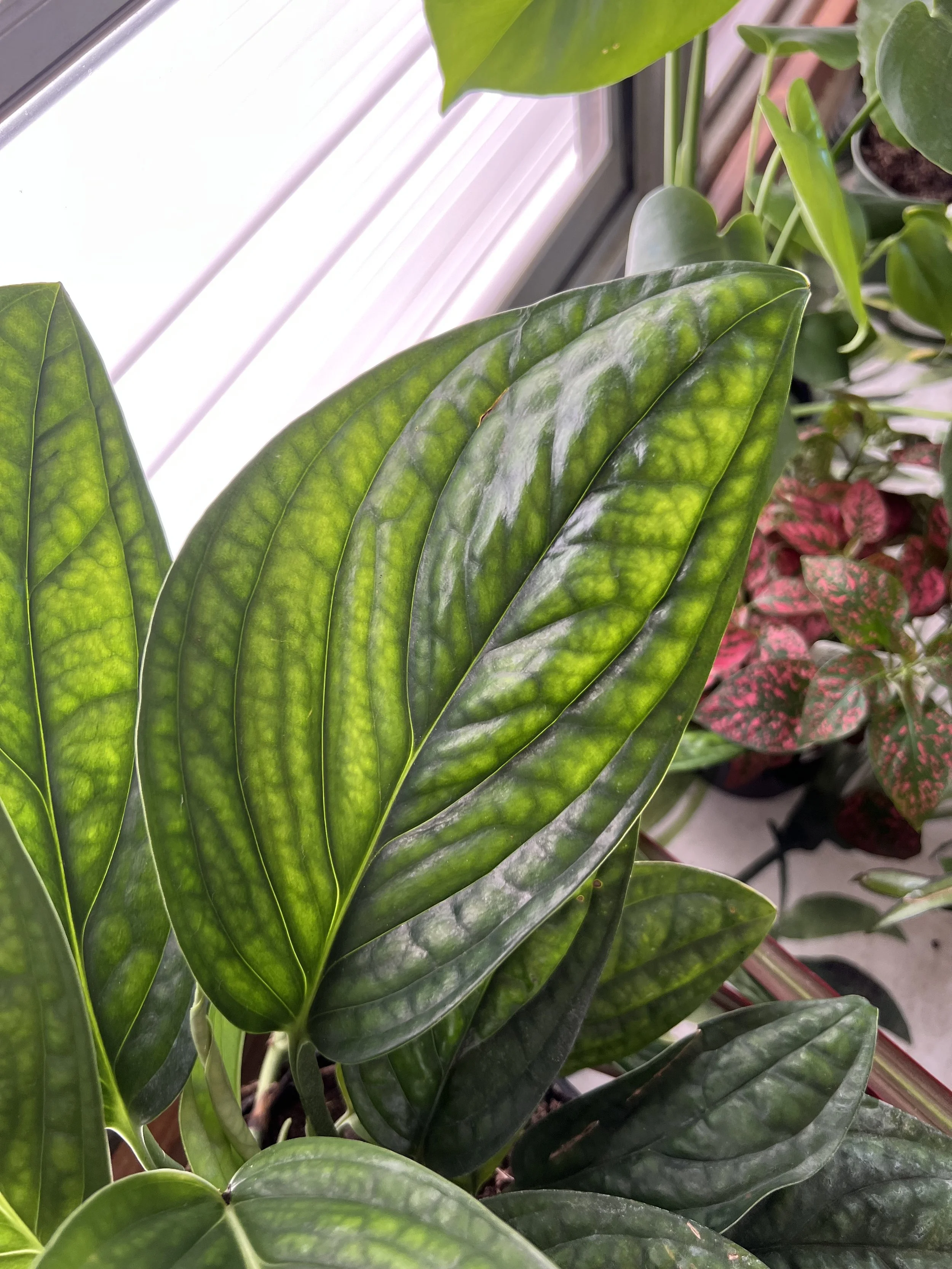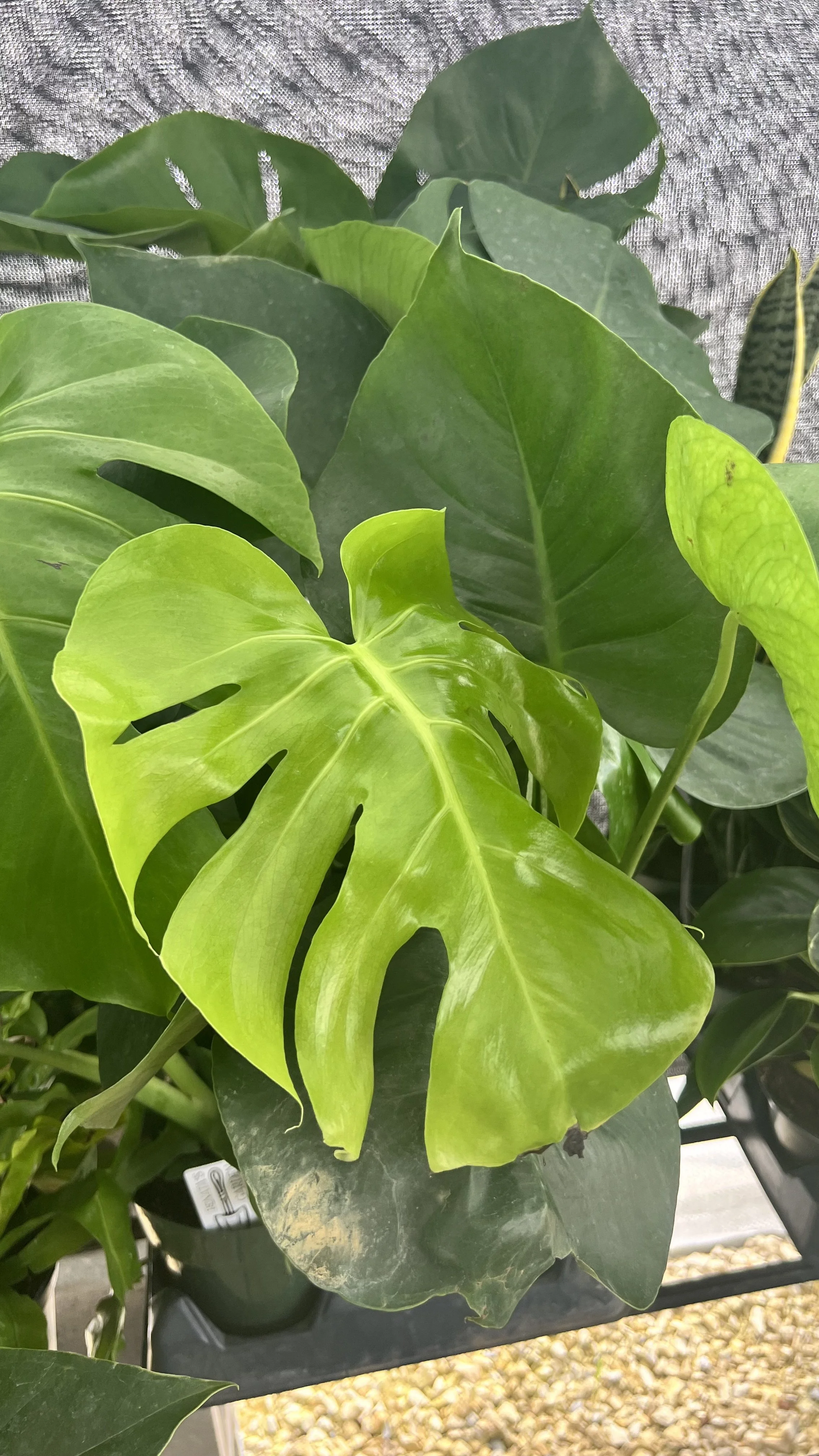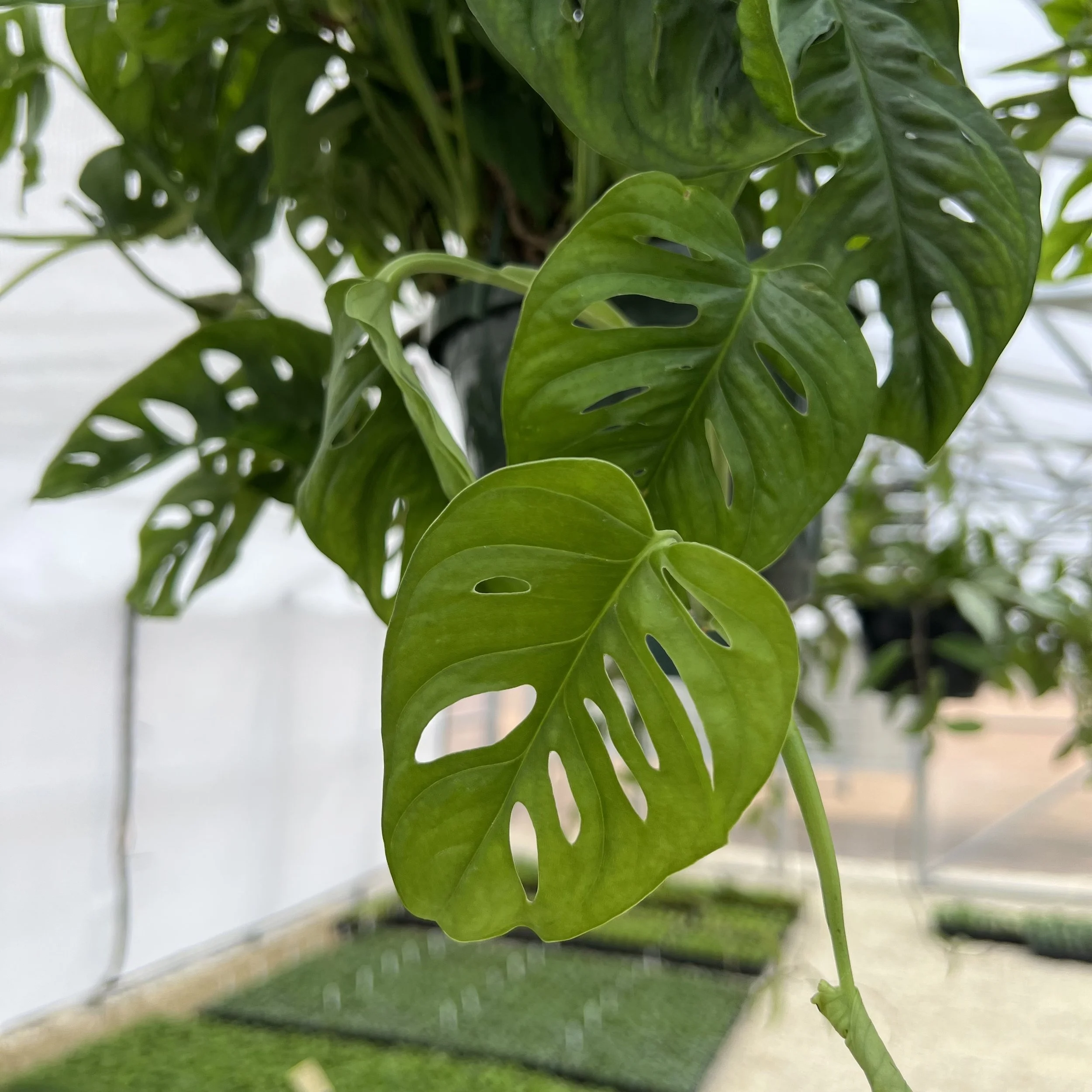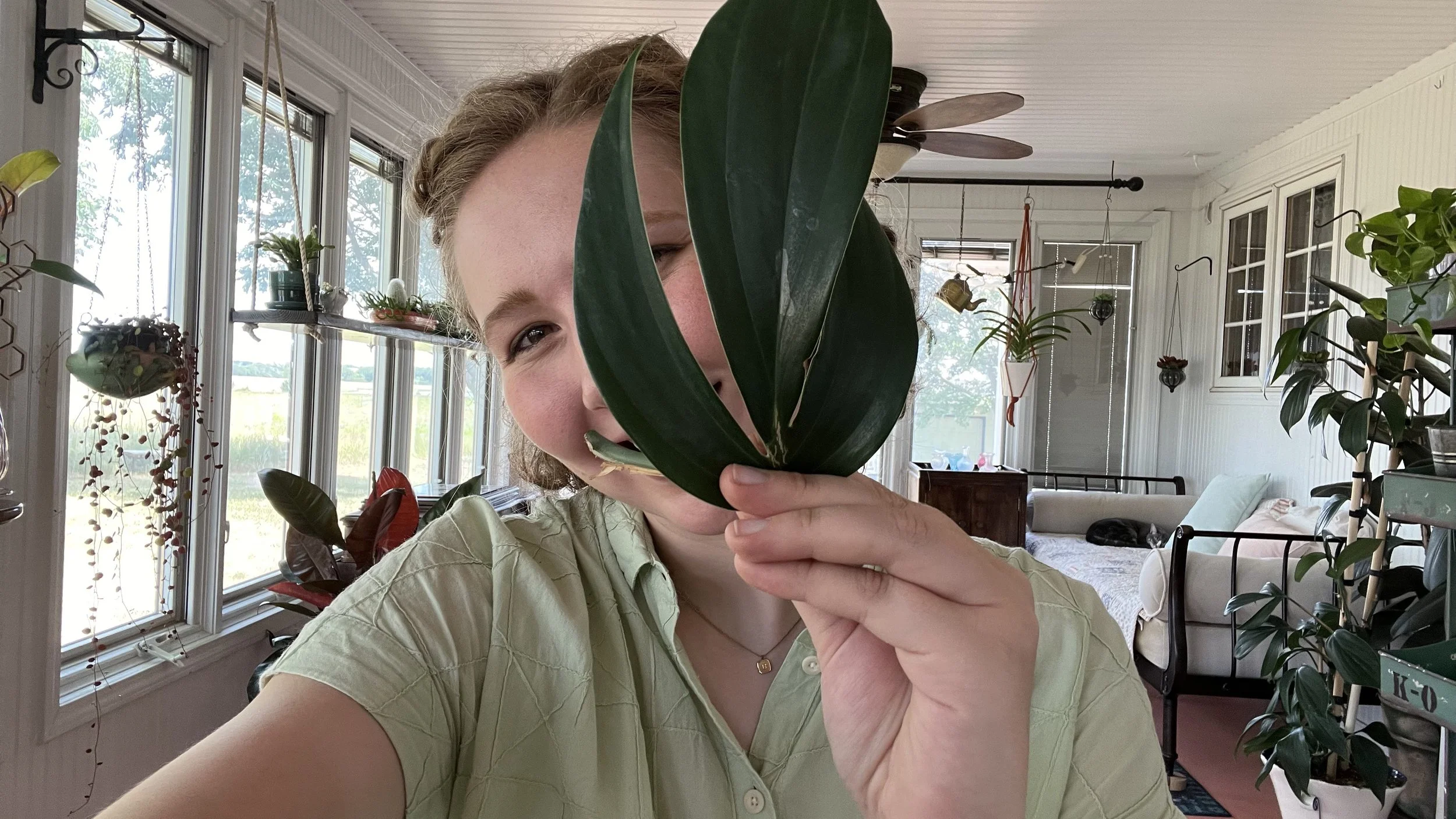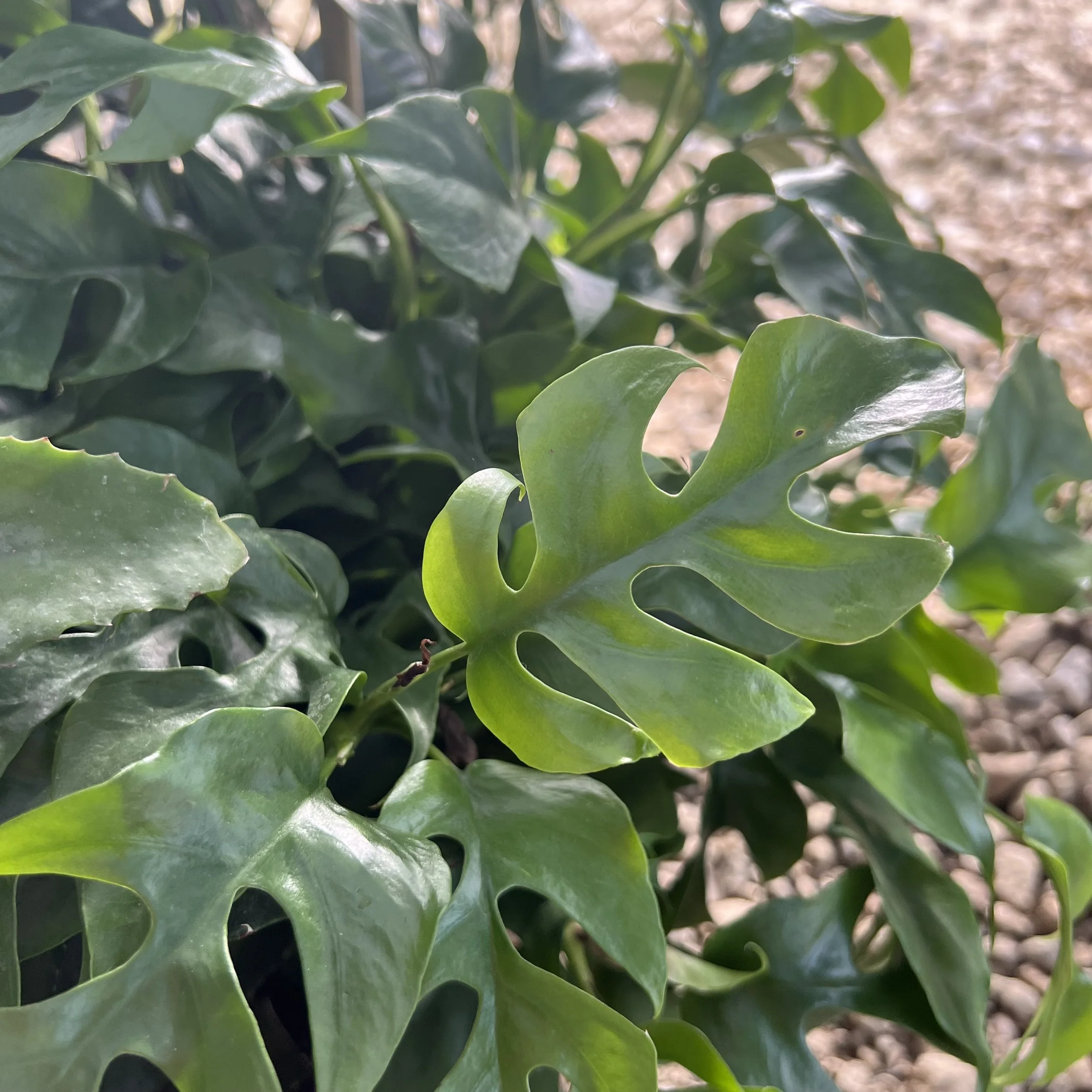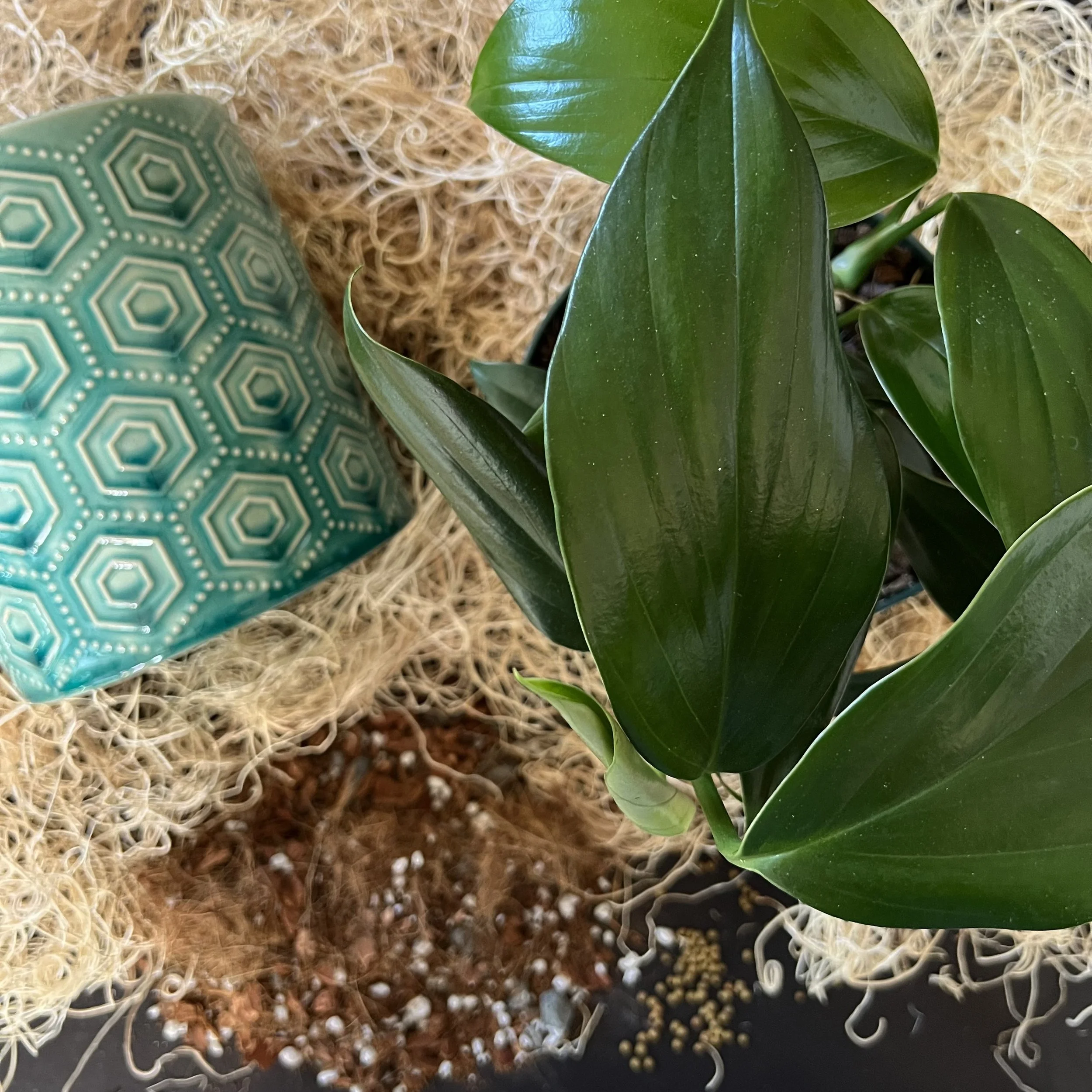
SWISS CHEESE PLANT
Monstera | Raphidophora | Philodendron
Family Araceae
-
Light: Indirect, bright light is best for this group of plants. Higher light levels encourage a phenomenon known as “fenestration” in this group of aroid species. Holes start to appear in new leaves!
Temperature: 60-80 F
Humidity: medium to high; avoid drafty areas
-
Water: Water when the top 2-4” of potting mix has dried. Plants tend to get root bound in summer months, using water quickly.
Repotting: Repot every 1-2 years into a slightly larger container (1-2” increased diameter or depth). Use a well-drained potting mix such as bark-based or coir-based. If not available to you, use a general purpose potting mix.
Fertilizing: Either…
Water Application: Incorporate fertilizer into your watering cycle once per month March through September. Dilute an all purpose fertilizer (20-20-20) by half OR use your favorite fertilizer rated for houseplant use in your water.
Slow Release: Incorporate slow release fertilizer pellets into the top inch of potting soil every 6 months. Apply the rate indicated for indoor plants on the label. If no recommendation for houseplants is present, apply 1/4 to 1/2 the listed rate.
-
The Araceae family includes many foliage favorites including: peace lily, anthurium & pothos.
-
(Listed in order of commonality…)
Two-spotted spider mites
Thrips
Wrapping, packed roots that cause lower leaf yellowing
Nitrogen deficiency due to speedy growth
-
Is Swiss cheese plant pet safe?
It is slightly toxic to animals due to a higher concentration of calcium oxalate crystals (called raphides). Read more about it here.
COC can vary in abundance in different aroid plants and can cause varying reactions when consumed by humans or animals, ranging from a slight mouth irritation to swelling of the lips and throat. Use caution when housing aroids in a home with pets. KNOW YOUR ANIMAL’S TENDENCIES!
Have a more specific question?
I’m just a few clicks away.

